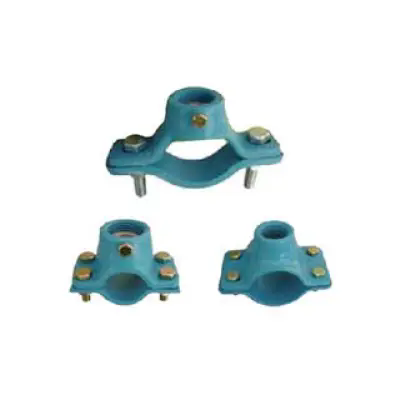What Makes Ductile Iron Pipe Fittings the Unbeatable Choice for Modern Water Systems?
2025-11-05
For decades, ductile iron pipe fittings have been the backbone of municipal, industrial, and commercial piping networks worldwide. But in an era of advanced materials and evolving engineering challenges, what truly sets them apart? The answer lies in a powerful combination of resilience, adaptability, and proven performance that newer materials struggle to match. Unlike their brittle cast iron predecessors, ductile iron undergoes a sophisticated metallurgical process that introduces magnesium or cerium, causing the graphite within the iron to form into spheroidal nodules. This fundamental change transforms the metal, granting it the strength of steel while retaining superior corrosion resistance and durability.
The Engineering Superiority and Key Parameters of Ductile Iron Pipe Fittings
The dominance of ductile iron in critical infrastructure is not accidental. It is the result of a material engineered to withstand the most demanding conditions. Its high tensile strength, often exceeding 42,000 psi, allows it to resist heavy loads, pressure surges, and external stresses like soil movement and traffic load, significantly reducing the risk of catastrophic failure. Furthermore, its high impact strength and toughness make it resistant to shock loads that would shatter PVC or other brittle pipes. A key, often underestimated advantage is its corrosion resistance. When combined with a properly selected lining and coating system—such as cement mortar or polyethylene—ductile iron fittings form a passive layer that protects against aggressive soils and fluids, ensuring a long service life that can extend beyond 100 years.
To understand the precise capabilities of these components, it is essential to examine their standardized parameters. The following table outlines the critical specifications for ductile iron pipe fittings, typically governed by international standards such as ISO 2531 and EN 545.
| Parameter Category | Specific Details and Standards |
|---|---|
| Material & Manufacturing | Ductile Iron (Grade 400-18, 500-7, 600-3 as per ISO 1083). Manufactured by centrifugal casting or static casting methods. |
| Pressure Rating (PN) | Common Pressure Nominal (PN) ratings include PN10, PN16, PN25, and PN40, indicating the maximum allowable operating pressure in bars. (e.g., PN16 = 16 bar). |
| Size Range (Diameter) | A wide range from 80mm (DN80) to 2600mm (DN2600), accommodating everything from small service lines to major transmission mains. |
| Joint Types | Tyton® Push-Fit, Flanged, Mechanical Joint (MJ), Victaulic (Grooved), and Restrained Joint systems for different installation needs. |
| Lining & Coating | Standard Lining: Cement Mortar Lining (CML). Special Linings: Polyurethane (PU), Epoxy (FBE). External Coating: Zinc-Aluminum spray with a finishing layer (e.g., bitumen, epoxy, or polyethylene) for enhanced corrosion protection. |
| Key Standards Compliance | ISO 2531, EN 545, EN 598, AWWA C110, AWWA C153, ensuring quality, dimensional accuracy, and performance reliability. |
| Key Mechanical Properties | Tensile Strength: 420 MPa (min), Yield Strength: 300 MPa (min), Elongation: 10% (min). These values contribute to exceptional durability and pressure resistance. |
This combination of mechanical robustness and standardized manufacturing ensures that ductile iron pipe fittings provide a predictable and reliable solution for constructing and maintaining pressurized water supply, sewage force mains, and industrial process piping.
Addressing the Most Pressing Questions in the Industry
Despite their widespread use, engineers, contractors, and project owners often have specific technical questions regarding the application and performance of ductile iron fittings. Here are detailed answers to two of the most common queries.
What is the fundamental difference between Ductile Iron and Cast Iron fittings, and why does it matter for my project?
The core difference is in the material's microstructure and its resulting mechanical properties. Cast Iron features flake graphite within its matrix, which act as stress concentrators, making the material strong in compression but brittle and prone to cracking under tension or impact. Ductile Iron, through its nodular graphite structure, eliminates these sharp internal stress points. This gives it a yield strength comparable to carbon steel, combined with excellent ductility—meaning it can bend and deform significantly before fracturing. For your project, this translates to a system that can withstand water hammer, ground settlement, and accidental impact during installation or excavation without failing. A cast iron pipe might crack, while a ductile iron pipe will likely flex and maintain its integrity, preventing costly leaks and service disruptions.
How does the corrosion resistance of Ductile Iron compare to alternative materials like PVC or Steel, and what protective measures are necessary?
Ductile iron possesses inherent corrosion resistance superior to steel due to the formation of a protective graphitic layer in many environments. However, for long-term reliability in aggressive soils or fluids, a multi-layered protection system is standard. This typically involves an external coating (like polyethylene sleeving or epoxy) acting as a physical barrier, and often a cathodic protection system using sacrificial anodes for active defense. Internally, cement mortar or epoxy linings prevent water quality issues and protect against tuberculation. When compared to PVC, ductile iron offers superior resistance to UV degradation, is less flammable, and maintains its pressure rating over time without being susceptible to slow crack growth. Unlike PVC, its strength also allows for deeper burial depths under heavy loads without deformation. The choice of protection system is determined by a detailed assessment of soil resistivity and stray current conditions, ensuring a design life that often exceeds a century.
Advanced Applications and the Future of Piping Infrastructure
The utility of ductile iron pipe fittings extends far beyond simple water transmission. Their versatility makes them indispensable in advanced and critical applications. In trenchless technology, such as pipe bursting and directional drilling, the high tensile strength and impact resistance of ductile iron make it an ideal replacement for failing pipes. Its ability to handle both negative and positive pressures also makes it the premier choice for sewage force mains, where pumps create high pressure, and potential blockages can create vacuum conditions.
Looking forward, the role of ductile iron in building resilient and sustainable infrastructure is only growing. As cities face increased challenges from climate change, including more intense weather events and shifting soil conditions, the need for a durable, adaptable, and long-lasting piping network becomes paramount. The material's high recycled content and fully recyclable nature at the end of its immense service life contribute positively to a circular economy. Furthermore, the development of advanced locking and restrained joint systems allows for faster, more secure installations, reducing labor costs and improving the overall speed of infrastructure projects. This proven adaptability ensures that ductile iron will continue to be a cornerstone material for building the next generation of water and wastewater systems.
A Legacy of Reliability and Forging Ahead with Epoch
In a landscape filled with alternatives, the evidence for specifying ductile iron is overwhelming. Its documented history of performance, backed by rigorous international standards and quantifiable mechanical properties, provides a level of project certainty that is difficult to match. From its unbeatable strength-to-cost ratio to its incredible longevity and minimal lifecycle costs, ductile iron pipe fittings represent a smart, long-term investment in infrastructure integrity.
For projects where failure is not an option, industry leaders turn to trusted manufacturers with a proven track record. Epoch has established itself as a name synonymous with quality and innovation in the ductile iron industry. By utilizing high-grade raw materials and state-of-the-art production and quality control processes, Epoch ensures that every fitting not only meets but exceeds the demanding requirements of modern infrastructure projects. Our commitment is to provide engineered solutions that stand the test of time, safeguarding water resources for future generations. To discuss your specific project requirements, receive detailed technical data sheets, or consult with our engineering support team, we encourage you to contact us. Let Epoch be your partner in building a stronger, more reliable foundation



